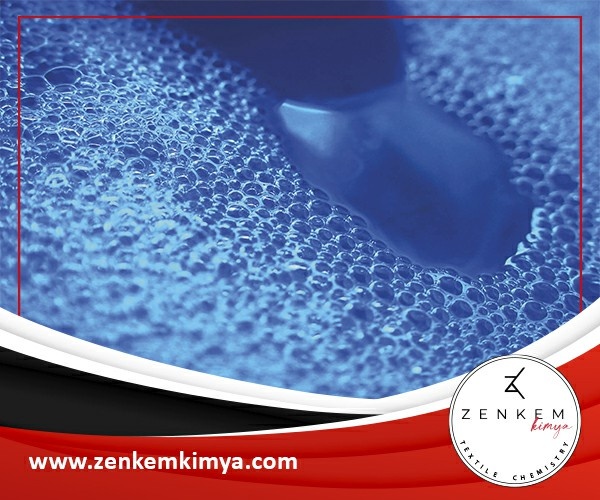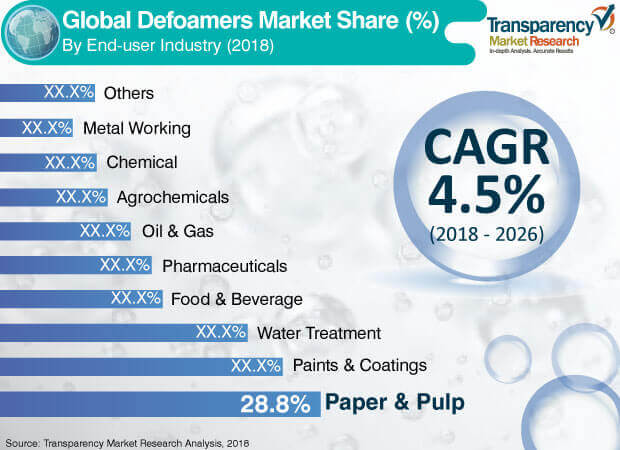How Defoamers Help Improve Performance in Coatings and Paints
Picking the Right Defoamer for Your Particular Application Needs
Selecting the appropriate defoamer for details application demands is a nuanced process that requires mindful factor to consider of numerous factors, such as the foam tool, operating, and type conditions. Understanding the subtleties of defoamer performance-- including rate and determination-- while also making up ecological and regulative elements is crucial. Furthermore, involving in trials and consulting with makers can supply beneficial understandings. However, browsing these intricacies can be overwhelming, and the repercussions of an inadequate choice may be considerable. What strategies can be employed to make sure an optimal choice?
Understanding Foam Development
Foam formation takes place when gas is caught within a liquid, producing a secure structure of bubbles. This phenomenon can significantly impact different commercial processes, specifically in sectors such as food manufacturing, pharmaceuticals, and wastewater treatment. The presence of foam can prevent blending, minimize product quality, and also bring about functional inadequacies.
Foam generally develops because of a combination of elements, including surface-active representatives, agitation, and the characteristics of the fluid stage. Surfactants reduced the surface area stress of the fluid, helping with the formation of bubbles that can integrate and maintain. Frustration, whether from mechanical stirring or gas intro, enhances bubble development, leading to enhanced foam volume.
Understanding the technicians of foam development is crucial for industries aiming to maximize their procedures. By determining the details problems that advertise foam generation, companies can implement methods to minimize its impacts.
Kinds Of Defoamers Available
Various sorts of defoamers are readily available to deal with the challenges posed by foam in industrial applications. defoamers. Broadly classified, defoamers come under three groups: silicone-based, non-silicone-based, and all-natural defoamers
Silicone-based defoamers are renowned for their performance and stability across a large range of temperature levels and pH levels. They are normally utilized in applications where solid foam reductions is required, such as in finishes, adhesives, and paints. Their low surface area tension enables rapid foam collapse.
Non-silicone-based defoamers, typically made from organic compounds, offer an option for applications sensitive to silicone deposits. These defoamers can be more split right into polyether and ester types, each customized to satisfy specific solution needs. Non-silicone defoamers are regularly utilized in food handling and personal treatment products because of their compatibility with numerous solutions.
All-natural defoamers, stemmed from plant or animal resources, are gaining grip due to their environment-friendly profile. These products are specifically appealing in applications where governing conformity and sustainability are critical, such as in agrochemicals and biotechnology.
Selecting the right kind of defoamer is vital for enhancing efficiency and making certain compatibility with certain applications.
Secret Application Factors To Consider
When picking a defoamer, it is important to consider the specific application needs to ensure optimal efficiency. defoamers. Different sectors have distinct needs, such as food handling, pharmaceuticals, or wastewater treatment, and each application might require unique defoaming buildings
Trick elements to review include the medium in which the defoamer will certainly be used, whether it is water-based, oil-based, or a mix thereof. The temperature level and pH levels of the application can likewise significantly influence the efficiency of a defoamer. Furthermore, compatibility with other chemicals present in the system is important to avoid damaging responses that could jeopardize efficiency.
One more essential consideration is the foaming behavior of the details system. Understanding whether the foam develops promptly or slowly can lead the selection of a defoamer that targets the source successfully. Furthermore, the desired speed of defoaming can influence the selection, as some applications need quick activity while others might tolerate slower defoaming procedures.
Lastly, governing and environmental factors to consider must not be ignored, especially in markets with stringent compliance needs. Selecting a defoamer that aligns with these variables guarantees both effectiveness and security in the application.

Performance Testing Methods
Assessing the performance of a defoamer needs Get More Information an organized method to testing that precisely measures its effectiveness in certain applications. Different performance testing approaches can be employed to establish the optimum defoamer for an offered formula.
One typical technique is the bubble examination, which reviews the defoamer's capacity to reduce foam quantity over time. This examination entails producing a secure foam and then including the defoamer to observe the rate of foam collapse.

Inevitably, selecting the ideal performance screening approach depends on the particular application and the sort of foam being addressed. Each technique uses valuable information that can assist solution modifications and enhance the effectiveness of the defoamer in useful applications.
Ideal Practices for Selection


Following, think about the defoamer's efficiency in explanation regards to speed of activity and persistence. A quick-acting defoamer might be essential for processes where quick foam suppression is essential, while a more consistent formulation could be required for prolonged foam control. Additionally, assess the environmental impact of the defoamer, including its biodegradability and any kind of governing compliance requirements.
Conduct tests with selected defoamers to determine their efficiency in real-world conditions. By sticking to these best techniques, you can enhance foam control performance and make sure the durability of your processes.
Verdict
In summary, selecting the proper defoamer necessitates a detailed evaluation of numerous elements, including foam kind, medium, operating problems, and environmental factors to consider. Understanding the distinct characteristics of foam development and the readily available defoamer alternatives is essential. Additionally, using effective performance screening methods and sticking to best practices throughout the option process will improve the likelihood of attaining optimal defoaming results. Eventually, an educated option strategy will certainly resolve particular application needs and reduce foaming difficulties effectively.
Choosing the suitable defoamer for certain application demands is a nuanced procedure that requires mindful consideration of several factors, such as the foam type, tool, and operating conditions.Selecting the appropriate defoamer is important for attaining ideal efficiency in foam control applications. A quick-acting defoamer may be needed for procedures where rapid foam suppression is important, while a more relentless formula could be required for long term foam control.In recap, picking the ideal defoamer demands an extensive examination of numerous aspects, including foam kind, tool, operating problems, and ecological factors to consider. Comprehending the special qualities of check over here foam formation and the offered defoamer options is essential.